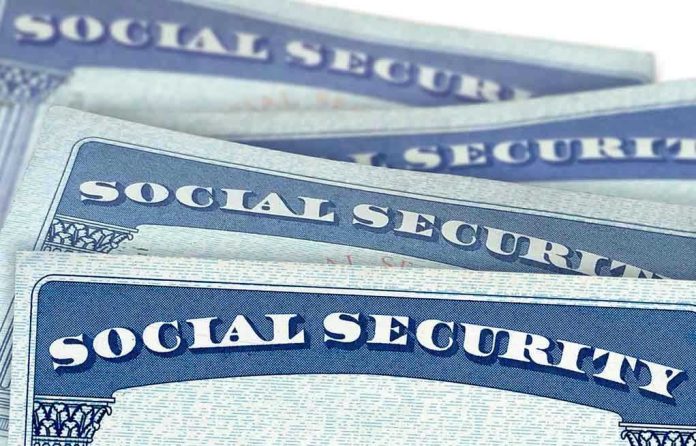
The Social Security Administration backtracked on a controversial policy that would have forced 3.4 million Americans annually to make unnecessary trips to overwhelmed field offices, demonstrating how quickly bad government ideas crumble under public pressure.
Story Overview
- SSA proposed mandatory identity verification that would have created 3.4 million additional office visits yearly
- Policy targeted routine phone services like address changes and benefit letter requests
- Advocacy groups and lawmakers forced SSA to withdraw the proposal within weeks
- Change highlighted ongoing SSA staffing cuts and accessibility concerns for vulnerable Americans
Government Overreach Meets Reality Check
The Social Security Administration’s July proposal would have required millions of beneficiaries to complete complex online identity verification or visit field offices for services previously handled by phone. The agency’s own regulatory filing acknowledged this would generate 3.4 million additional office visits annually for routine requests including address changes, benefit verification letters, and tax forms. This represents exactly the kind of bureaucratic burden that makes government less responsive to the people it serves.
SSA planned to expand its Security Authentication PIN system, forcing callers to generate one-time codes through online accounts before accessing phone services. Those unable or unwilling to navigate this digital maze would face the choice of using SSA’s notoriously difficult website or making costly trips to understaffed field offices.
Vulnerable Americans Would Bear the Heaviest Burden
The policy would have disproportionately impacted older adults, disabled Americans, and rural residents who rely most heavily on phone services. According to the Center on Budget and Policy Priorities, nearly 25 percent of older adults live more than an hour round-trip from the nearest Social Security field office. Kathleen Romig from CBPP correctly identified this as a “significant new burden, particularly for those who live in rural areas or have transportation or mobility difficulties.”
This proposal epitomizes government tone-deafness. While bureaucrats in Washington dream up new digital requirements, real Americans struggle with basic access to the benefits they’ve earned through decades of work and tax payments. The policy ignored the reality that many seniors and disabled individuals lack reliable internet access or the technical skills to navigate complex online verification systems.
Staffing Cuts Make Bad Policy Worse
The timing of this proposal reveals particularly poor judgment by SSA leadership. The agency simultaneously plans to eliminate approximately 7,000 positions while potentially adding millions of office visits annually. Current field offices already face chronic understaffing, long wait times, and resource constraints. Adding 3.4 million visits to this strained system would have created a bureaucratic nightmare.
Previous SSA attempts to restrict access have followed similar patterns. The agency already requires in-person verification for direct deposit changes, resulting in an estimated 1.9 million extra office visits yearly. Earlier in 2025, SSA abandoned another proposal requiring in-person or online verification for new benefit claims after facing public backlash. These repeated attempts suggest an institutional bias toward making services less accessible rather than more efficient.
Public Pressure Forces Government Accountability
AARP and other advocacy groups mobilized quickly against the proposal, demonstrating how organized opposition can check government overreach. Within weeks of the July filing, SSA faced mounting criticism from lawmakers including Senator Elizabeth Warren and advocacy organizations representing millions of beneficiaries. The swift reversal proves that government agencies respond when faced with sustained public pressure and media attention.
SSA ultimately clarified that the Security Authentication PIN would remain optional, stating that beneficiaries “will continue to use the existing identity verification process” when calling the national service number. The agency withdrew proposed restrictions on four key phone services, allowing Americans to continue accessing their benefits without unnecessary bureaucratic hurdles. This outcome represents a victory for common sense and accessible government services.
Sources:
Social Security Policy Could Force 3.4 Million Extra Office Visits a Year, Advocates Say
Social Security Change Office Visit
Social Security Administration Identity Verification
SSA Withdraws Proposed Restrictions on 4 Phone Services









